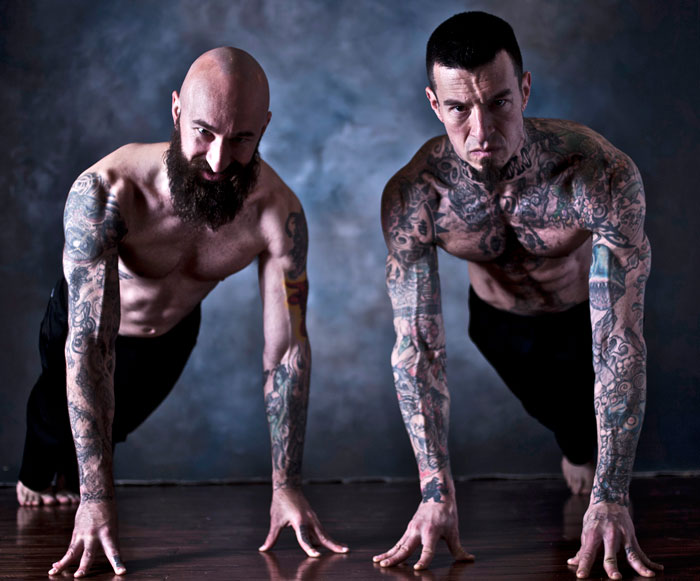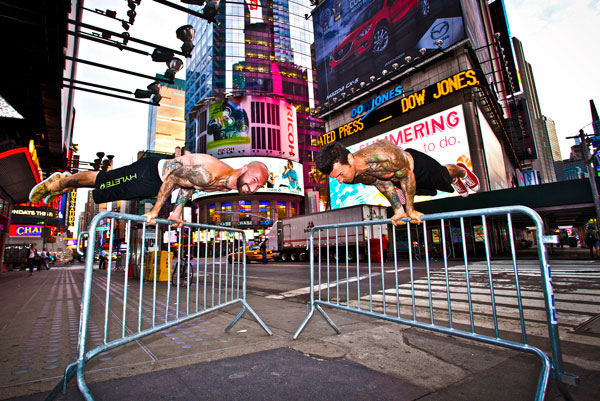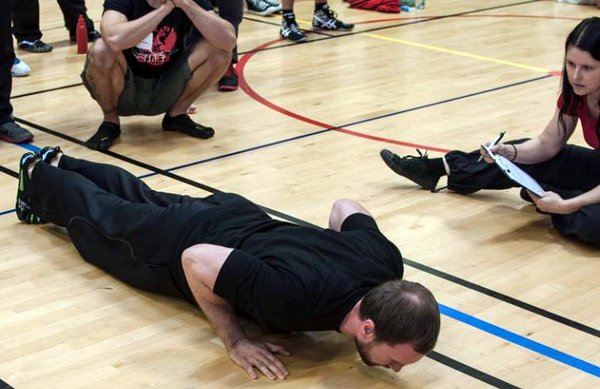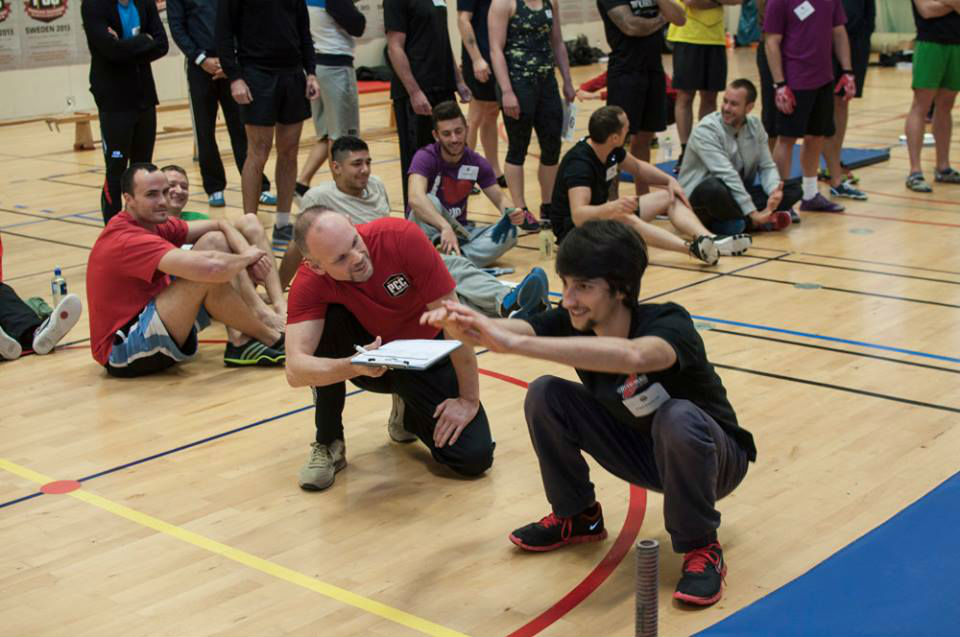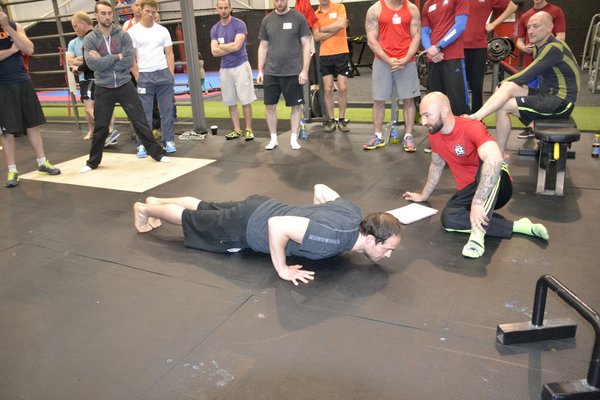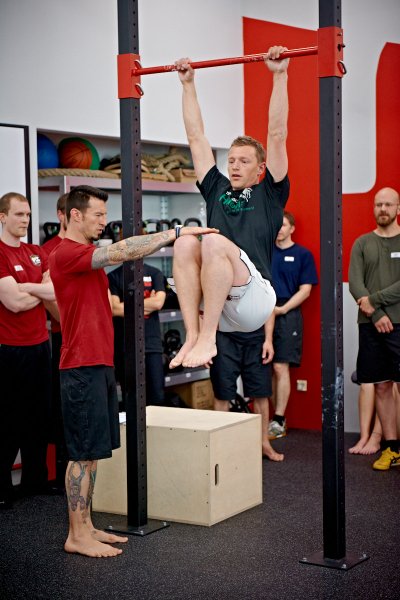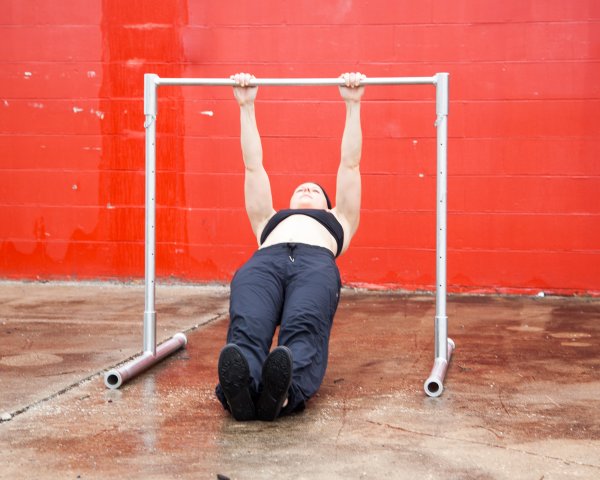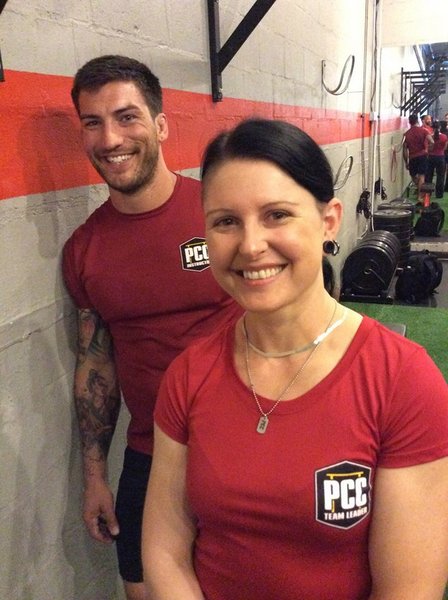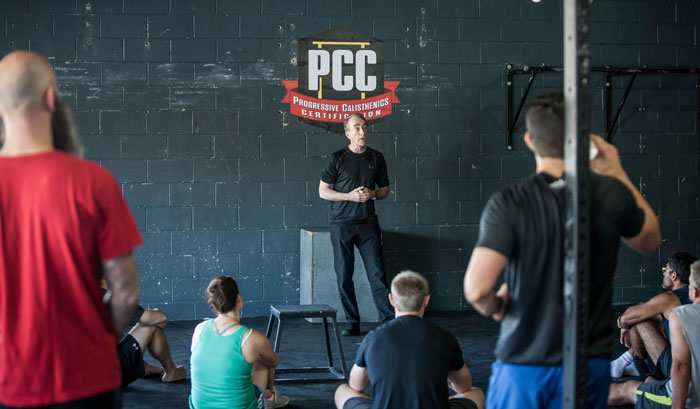
“There’s an epidemic. 99 reps…”
Dragon Door founder John Du Cane uttered this ominous phrase during the PCC workshop I attended.
In order to pass the PCC, you must complete the Century Test, which requires 100 reps. Yet there is a 99 rep curse. One rep shy of the goal. There were multiple such instances when I got my PCC, and I feel they could have been avoided.
If you’re looking to get your PCC or are simply looking for some techniques to help you squeeze out extra reps in your training, this article is for you.
We’ll go through the four movements of the test one-by-one, but first a comment on form: great form will be more efficient and preserve energy throughout the test. Before you worry about increasing reps, be sure your form is approaching perfect.
The Squat
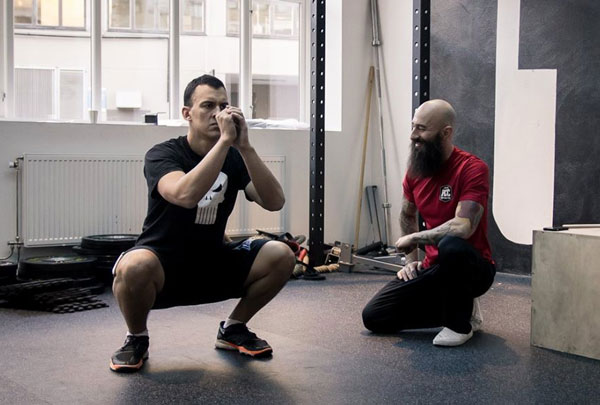 Position check:
Position check:
How is your foot position? Do you have contact with the ground through your big toe, little toe, and the center of your heel?
Play with the width and rotation of your feet. Find a position that allows you to feel like you are sitting between your legs while keeping your feet flat on the floor, knees inline with your toes, with a neutral spine.
1) Lower down slowly and with control. On the way up, begin pushing not just down through the floor, but also to the sides, like you’re standing on a towel and are trying to rip it in half using your feet (your feet, including the big toe joint, must remain flat on the ground).
2) As you’re ascending out of the hole, bear down on your abs—think low and deep, like you’re about to get punched below the navel.
3) On the hardest rep(s), try using the Valsalva maneuver: breathe in on your way down, but don’t breathe out on your way up. Hold the air in to keep your intra-abdominal pressure high until you hit the sticking point (the hardest portion of the rep). At that point begin to slowly let the air hiss out as you complete the rep. You should sound like a tire losing air.
4) At the top of each rep get tall and relaxed. Now is a good time to take an extra breath before beginning your next rep. You have 8 minutes. The clock is not your enemy, fatigue is.
The Push-Up
 Position Check:
Position Check:
Are your forearms approximately perpendicular to the ground throughout the movement?
Are your upper-arms approximately 45 degrees from your body at the bottom of each rep, so that you look like an arrow when viewed from above?
Have you found a hand position of appropriate width for your upper-arm length and that accommodates your shoulder girdle? Play with hand placement and rotation to find your best position.
Is your body in a straight line from shoulder to heel?
1) Pretend you have a big dial in each hand. When you hit the bottom of the rep, grip the dials hard and turn them as you push into the floor—the left one goes counterclockwise, the right one goes clockwise. Your hand and elbow positions shouldn’t change, but you’re gripping and turning those dials anyway. The harder the rep, the harder you turn those dials and push.
2) Just before the sticking point, bear down on the abs (low and deep, like you are going to get punched in the gut again). Keep that tension until you finish the rep.
3) Lockout at the top of the rep and relax, but don’t linger. Remember: you’re still holding a plank. Don’t sag when you relax—your next rep will be terrible if you start in a weak position.
4) Remember the pressurized breathing from squat tactic #3? Use that again.
The Hanging Knee Raise
 Position Check:
Position Check:
Is the bar deep in your hands, not near the fingertips? Do you have a strong grip on the bar?
Are you shoulders packed down so that you’re not dangling off the structures of your shoulder?
Are your knees and feet together?
Check again. Failure to get into the right position will reduce your body’s willingness to fire the abs and to flex the hips. Don’t believe me? Grab a bar with your fingertips, hang from your shoulder sockets, leave your legs flailing around and let me know how you did versus being in a strong position.
These tactics will be about limiting body-sway, which is typically what wrecks candidates on the hanging knee raise.
1) Lower the legs slowly after each rep. The shorter and lighter your legs, the faster you can go. The more you’re built like me, the more you’ll need to control the eccentric portion of the movement.
2) Do not relax at the end of a rep. You risk losing position and incurring sway.
3) When the reps begin to get hard increase your grip on the bar, your depression/packing of the shoulder-blades, and the pressure you’re applying between your knees and feet—double-down on your starting position.
The Pull-Up
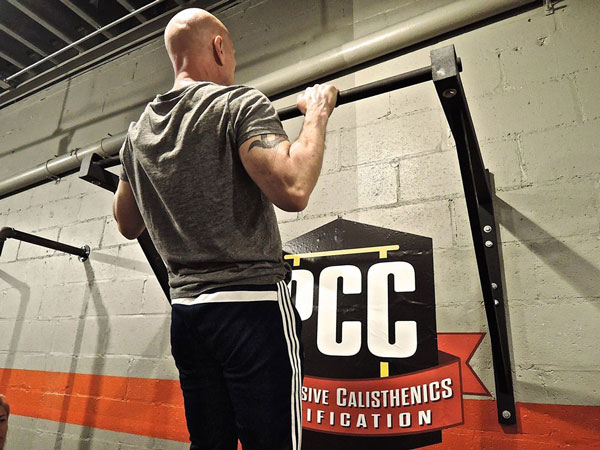 Position Check:
Position Check:
Do you have a deep grip on the bar—i.e., not near your fingertips?
Are your feet slightly in front of your body?
This is it. The moment when people complete 9 1/2 reps and wonder what just happened. Here’s how to avoid that:
1) Crush the bar. When the reps get hard your grip gets harder. You’re about to go for rep 100? Crush that bar like it’s covered in butter and you’re dangling over the Grand Canyon.
2) Right before the sticking point, bear down on the abs and glutes. Deep and low for the abs, hard for the glutes. This won’t help unless you’re already crushing the bar. You are crushing the bar, right? Good. Crush harder. They should have to pry your hands off the bar after your 100th rep. Want a high-five when you pass? Too bad. Your hands won’t open for the next several minutes.
3) Remember the pressurized breathing? Now’s your time to shine. Get air in at the bottom position. Start hissing out air at the sticking point. Keep hissing until you complete the rep.
4) Savagely rip that bar off the supports. Think about driving your shoulders and elbows toward the Earth, rather than pulling your head over the bar. Refuse to fail.
These techniques, properly utilized, should get you about a 20% increase in reps. Practice them and watch your numbers go up.
See you at 100 reps.
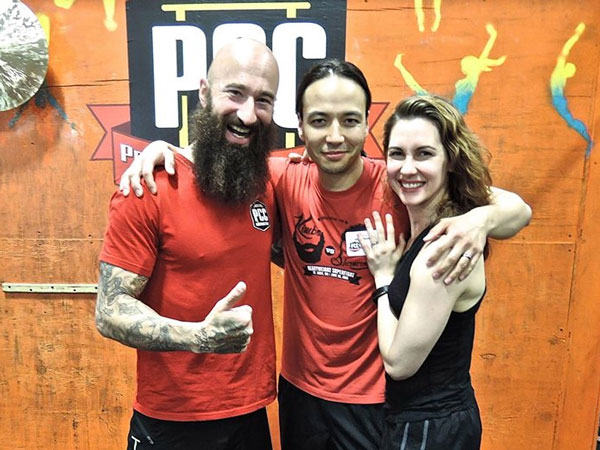
***
Eric Bergmann is a New York City based strength coach, movement specialist, and proud member of the PCC family. He co-owns Bergmann Fitness—a boutique training and nutrition service—with his wife, Beth. You can find out more about them at bergmannfitness.com
